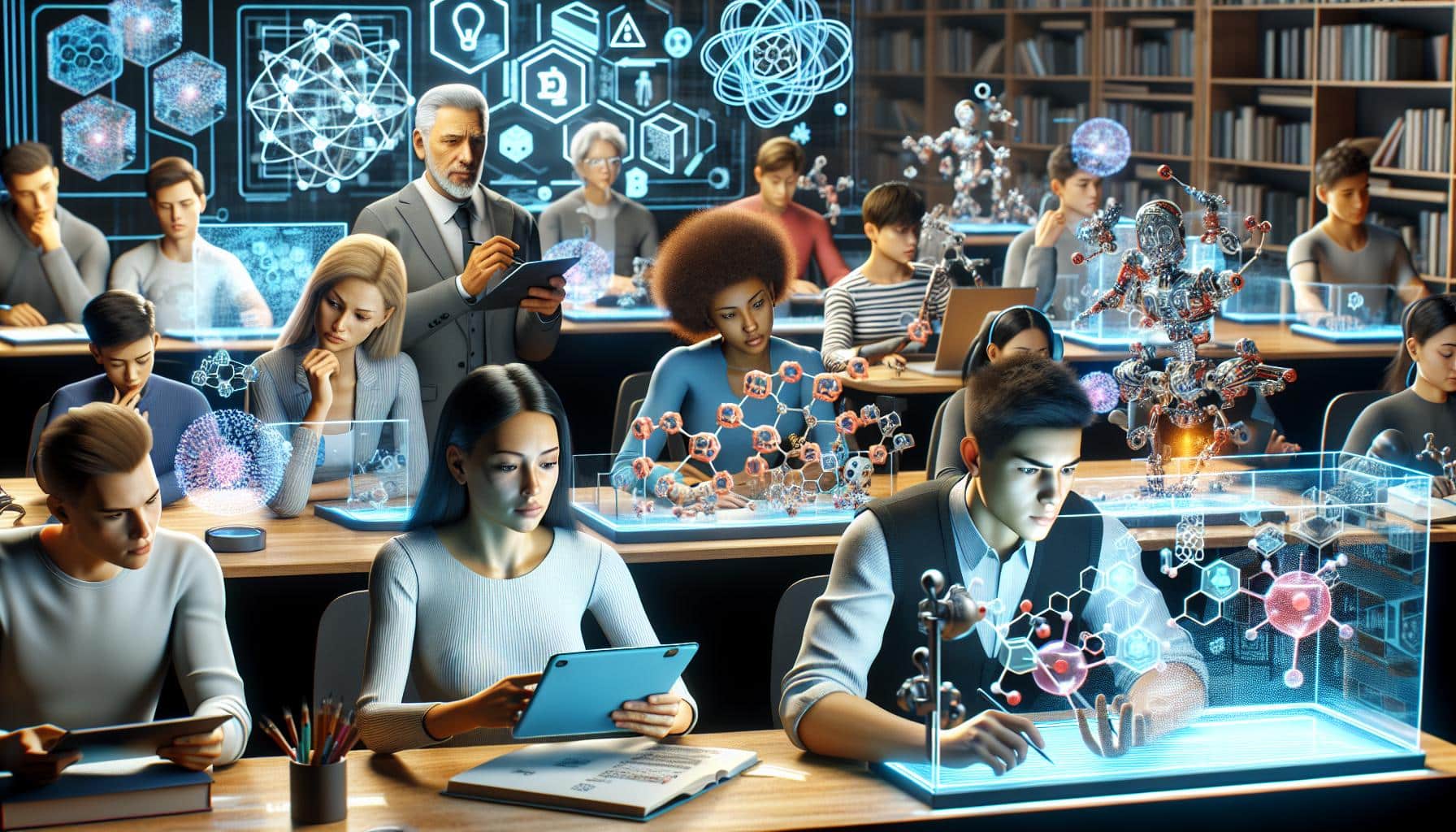Incorporating AI into Education: The Impact and Challenges
When ChatGPT, an AI language model, first emerged in November 2022, students were quick to put it to the test. For Justin Klein, a computer science major at Miami University, the AI was generating active responses for practice questions. This marked the beginning of a year that saw AI technology inspiring discussions about the future of education and forcing professors to adapt.
Some professors, like Tim Lockridge from Miami’s English department, have embraced AI as a tool to enhance learning. Lockridge believes that writing is a process that requires tools, and AI can be one such tool. He encourages his students to use AI to overcome challenges such as dense theoretical readings. However, he emphasizes that AI should not replace critical thinking and analytical skills. Instead, it should serve as an entry point for students to approach difficult texts.
Tactical Uses of AI in the Humanities Classroom
In one of Lockridge’s classes, ENG 171 humanities and technology, AI is integrated into the curriculum to explore its relationship with the humanities. AI is used to help students write summaries, outline arguments, and make sense of complex readings. However, it is crucial to ensure that AI remains a tool and does not become the endpoint of students’ learning.
Lockridge’s focus on tactical uses of AI in the humanities aims to leverage the technology to aid learning. He acknowledges the concern that writing is a process of thinking, and AI should support students in thinking through complex arguments and texts. The emphasis remains on students using their own analytical skills and critical thinking to complete the reading process.
Incorporating AI into the humanities classroom allows students to harness its potential while also maintaining the integrity of their own intellectual development. By defining the boundaries and purpose of AI usage in assignments, professors like Lockridge strike a balance between leveraging technology and preserving the value of analytical thinking.
Balancing AI Use and Academic Integrity
The use of AI in academic settings raises concerns about maintaining academic integrity. While some professors, like Lockridge, embrace AI, others may outright ban its use. At Miami University, the decision of whether to allow AI rests with individual faculty members rather than an overarching policy.
Brenda Quaye, the assistant director for academic integrity at Miami, highlights that instructors have the autonomy to decide how and when to use AI in their courses. The use of AI in academic assignments can lead to potential unauthorized use and academic misconduct. Last semester, Quaye’s office saw 35% of academic integrity cases relating to potential unauthorized AI use.
To address academic misconduct related to AI, Miami University imposes sanctions on students found to have used AI improperly. Depending on the severity of the violation, students may receive a zero on the assignment, a reduction in their overall grade, or even fail the class. Quaye also holds conversations with students to understand the motivations behind cheating and offers alternative strategies for academic success.
The Limitations of AI in Writing and Coding
While AI has the potential to aid students in writing and coding tasks, its limitations must be acknowledged. Quaye points out that AI can actually make writing worse, as it may produce unnatural and inconsistent content. In coding assignments, AI-generated code may include elements that haven’t been taught or don’t adhere to the assignment instructions, making it easier to detect unauthorized use.
Justin Klein, a computer science major, has experimented with AI for coding and acknowledges its fallibility. While AI can generate a basic backbone for tasks like website front-end development, it still struggles to generate 100% accurate code. Klein sees AI as a tool to reduce tedious tasks but recognizes the need for human intervention and fine-tuning in coding.
Despite the potential benefits of AI, professors and institutions must be cautious about its integration into academic settings. The primary concern should be maintaining the value of students’ learning experiences. A strong emphasis on critical thinking and analytical skills should remain at the core of education, with AI serving as a supplementary tool for student development.
Analyst comment
Neutral news.
As AI technology becomes more prevalent in education, professors face the challenge of defining acceptable uses of AI while ensuring students still engage in critical thinking. Integrating AI into the humanities classroom can aid learning and maintain the integrity of students’ intellectual development. However, concerns about academic integrity arise, and individual faculty members at Miami University have the autonomy to allow or ban AI use. The limitations of AI in writing and coding must also be acknowledged. Overall, AI should be a supplementary tool for student development while critical thinking remains central.













